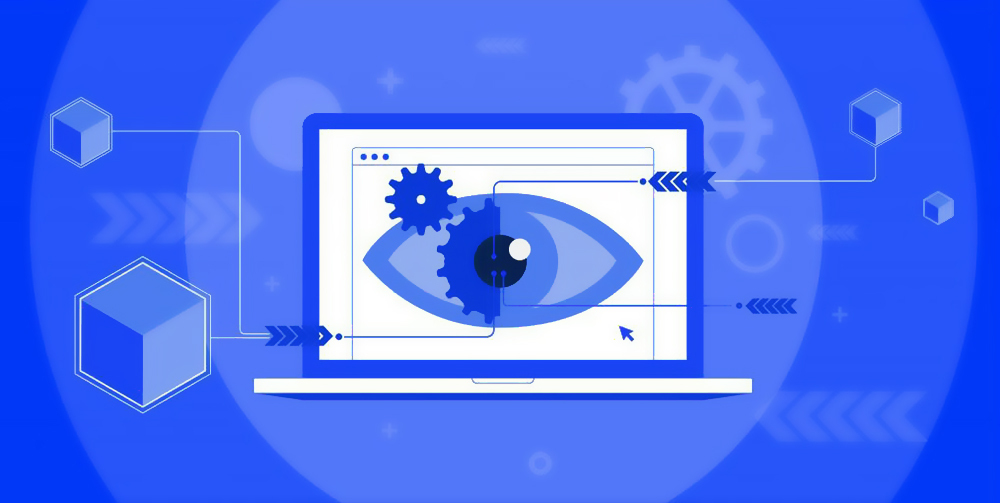Table of Contents
New AI technology:
Do you feel prepared for the future? The future has arrived with the creation of new AI technology. AI is revolutionizing how we live and work, from self-driving cars to tailored suggestions on streaming services. However, it goes beyond just entertainment or convenience. Healthcare and agricultural sectors are being transformed by AI to become more effective and efficient. And there are countless opportunities.
We’ll look at some of the most innovative AI developments affecting our future and how they’re altering the world as we know it in this blog article. Therefore, grab a seat and be ready to be amazed!

Computer Vision:
One of the newest AI advancements that is reshaping the future is computer vision. It is a technique that enables computers to comprehend and decipher visual information from the outside world. They have the same ability to interpret it as people do. Numerous uses for this technology exist, such as autonomous driving, object detection, and facial recognition.
Objects in pictures and movies can be found using computer vision. Then it recognizes them based on their forms, hues, and even textures. It can also be used to track people in real time and recognize faces. Machines can now make more precise judgements thanks to computer vision.
Robotics:
The development of robotics is transforming our world. Robots using AI now have the ability to assist humans with difficult tasks. These robots’ performance keeps getting better as they pick up knowledge from people.
Robots are not only used in many different industries, but they may also lessen the necessity for physical work in the future. This enables people to concentrate on harder activities. In several industries, this technology is also assisting in cost-cutting, waste-reduction, and safety improvements.
Robots may eventually be able to perform even more difficult tasks as AI technology continues to advance. They will therefore continue to play a significant role in our lives in the future.
Voice Assistants:
AI is used by voice assistants like Google Assistant and Amazon Alexa to comprehend human speech. The helpers might then reply in a friendly manner. They can also do things like play music, set alarms, and respond to inquiries.
OpenAI’s DALL-E:
The DALL-E AI model from OpenAI is reshaping the future thanks to its capacity to produce digital images. They can accomplish this from textual descriptions, so that is not really impressive. Not only is this Generative Adversarial Network (GAN) architecture. Additionally, it aids designers in producing digital artwork. Additionally, GAN enables robots to grasp and interpret language.
Input texts can be processed by the DALL-E model to produce scenes, objects, and abstract artwork. Already, 3D printing and this technology have been used to produce art for movie special effects.
Robotic Process Automation (RPA):
This cutting-edge AI technology automates repetitive operations. Humans gain from this since it saves them time on laborious jobs. They can instead concentrate on more challenging jobs that call for deeper thought and originality.
RPA can assist lower expenses while improving efficiency and accuracy. Additionally, it can be used to automate tasks that are too difficult or time-consuming for humans to complete. RPA has the potential to increase workplace productivity. RPA is probably going to become much more significant as AI technology progresses in the future.
Autonomous vehicles:
One of the most ground-breaking and astonishing new AI technologies is autonomous automobiles. Drones, lorries, and cars with self-driving AI technology can maneuver through traffic. They are also capable of making choices and safely interacting with their surroundings. Consequently, a more effective transportation system is made possible.
These cars can lessen traffic jams and car crashes. Additionally, they contribute to lowering air pollution. Additionally, autonomous vehicles open up new business and service options. Ride-sharing autonomous delivery vans and autonomous taxis are a couple of these possibilities. These cars have the potential to develop a sustainable transportation system.
DeepMind’s AlphaFold:
DeepMind’s AlphaFold is a deep learning system that is highly accurate at predicting the three-dimensional (3D) structure of protein molecules. This provides a pathway for potentially ground-breaking improvements in medication development and discovery.
This new ai technology allows researchers to learn in great detail about the structure of proteins. Scientists will then be able to comprehend how proteins interact with both other proteins and medications. This could result in significant medical advancements.
It is now possible to find new treatments for diseases that were once thought to have no known cures. The medical industry could undergo a transformation because to AlphaFold. DeepMind is expanding the realm of what is feasible by leveraging the power of AI.
Waymo self-driving cars:
Waymo self-driving cars are revolutionizing the transportation industry. Alphabet, the parent company of Google, owns Waymo. Its focus is on the creation of autonomous vehicles. Several American cities are now testing their technologies on public roadways, and the results so far are promising.
Advanced artificial intelligence (AI) algorithms in Waymo automobiles can even detect and react to human behavior. The effects of this new ai technology are enormous. It can improve security, lessen traffic, and promote accessibility for all users of transit.
IBM Watson:
IBM Watson, an IBM product The manner that research is conducted is being revolutionized by the potent AI system Watson. large-scale data processing and analysis capabilities. It is therefore a very useful tool for many companies. It can spot trends, patterns, and insights that people might occasionally miss. Additionally, compared to conventional AI systems, its ability to interpret natural language allows it to engage with people in a far more natural way. Businesses may use Watson to remain ahead of the competition and make data-based decisions.
Generative Pre-trained Transformer 3 (GPT-3)
Generative Pre-trained Transformer 3 (GPT-3) is a state-of-the-art language model. The future of artificial intelligence is being altered by this. This cutting-edge technology can produce writing that sounds like human speech and comprehends human language.
GPT-3 can be used to create written text with a natural sound. Anything from articles to blog entries and more can be used for this. It can also be used to increase the precision of activities involving natural language processing. It can enhance sentiment analysis, machine translation, and more. CHAT GPT is the most hyped new Ai technology.
Neuralink:
The goal of the ground-breaking new AI technology Neuralink is to link computers and human brains. Direct communication between the two will now be possible. Although the technology is still in its infancy, its potential effects are vast.
A new level of machine-human interaction can be unlocked by attaching the human brain to a computer. We will now have access to more data than ever thanks to this. This information might be utilized to enhance medical procedures, advance artificial intelligence, or even operate robotic prosthesis.
What to remember…
Overall, the developments in AI technology we’ve witnessed have been nothing short of astonishing. That holds true for all applications, including robots, brain-computer interfacing, and language production. The potential for advancement seems limitless, even with facial recognition technology and autonomous vehicles. We can’t overlook the advantages that such cutting-edge technology brings to our lives, despite the fears some people may have about the possible threats. The future is undoubtedly intriguing, and we are eager to learn more about the future of AI and the new ai technology.



